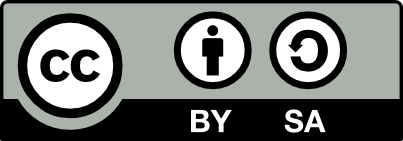Archives
International Journal of Zoology and Applied Biosciences Research Article

Arsenic content in tissues, fungus combs, herbs, termite mounds and soils of termites of the genus macrotermes and assessment of the health risk associated with their food use in the industrial zone of the societe nouvelle des phosphates du Togo (SNPT)
Solim PALI, Boris Dodji KASSENEY, Mamatchi MELILA, Bassaï Essohouna BODJONA, Tcha Esso-Essinam BADASSAN, Eyabana MOLLONG, Adolé Isabelle GLITHO
Year : 2024 | Volume: 9 | Issue: 5 | Pages: 94-103
Received on: 11/09/2024
Revised on: 19/09/2024
Accepted on: 08/10/2024
Published on: 13/10/2024
-
Solim PALI, Boris Dodji KASSENEY, Mamatchi MELILA, Bassaï Essohouna BODJONA, Tcha Esso-Essinam BADASSAN, Eyabana MOLLONG, Adolé Isabelle GLITHO( 2024).
Arsenic content in tissues, fungus combs, herbs, termite mounds and soils of termites of the genus macrotermes and assessment of the health risk associated with their food use in the industrial zone of the societe nouvelle des phosphates du Togo (SNPT)
. International Journal of Zoology and Applied Biosciences, 9( 5), 94-103.
-
click to view the cite format
Abstract
Arsenic is present in different environmental matrices of the phosphate mining and processing area of the Société Nouvelle des Phosphates du Togo; including termite tissues, termite waste, termite mounds, termite Fungus combs, soils and nearby herbs. Arsenic levels vary across matrices, with termite waste having the highest concentration (approximately 27.01 mg/kg) compared to the outside herbs, which have the lowest. Phosphate mining sites, including Hahotoé-Kpogamé and Akoumapé, have higher levels of As contamination in soils and termite tissues compared to the phosphate processing site. A positive correlation is observed between As levels in termite tissues and termite waste; suggesting an ability of termites to eliminate arsenic via their waste. Regarding health risks, the hazard quotient (HQ) for arsenic in termites exceeds 1, and for non-threshold effects, the excess individual risk (EIR) assessment gives EIR > 10-4 in both adults and children; which would mean that termite consumption poses a significant health risk, including cancer risks for human populations, particularly children. However, it should be noted that the estimation in this study includes total As (organic and inorganic). Since the toxicological reference values were calculated on the basis of inorganic arsenic, which presents more hazard and whose fraction represents 10% of total As, the daily exposure dose values for adults and children represent 1.40.10-4 mg/kg/d and 1.02.10-4 mg/kg/d of inorganic arsenic, respectively. These doses will then become lower than the toxicological reference value (TRV) with the consequence of hazard quotient (HQ) lower than 1 and resulting in low risks of carcinogenic effects. It is therefore necessary to specifically determine the inorganic fraction to refine the risk assessment and to extend this study to other trace elements in the prospected area.
Keywords
Termites of the Genus Macrotermes, Industrial Zone of SNPT, Arsenic, Health Risk.











